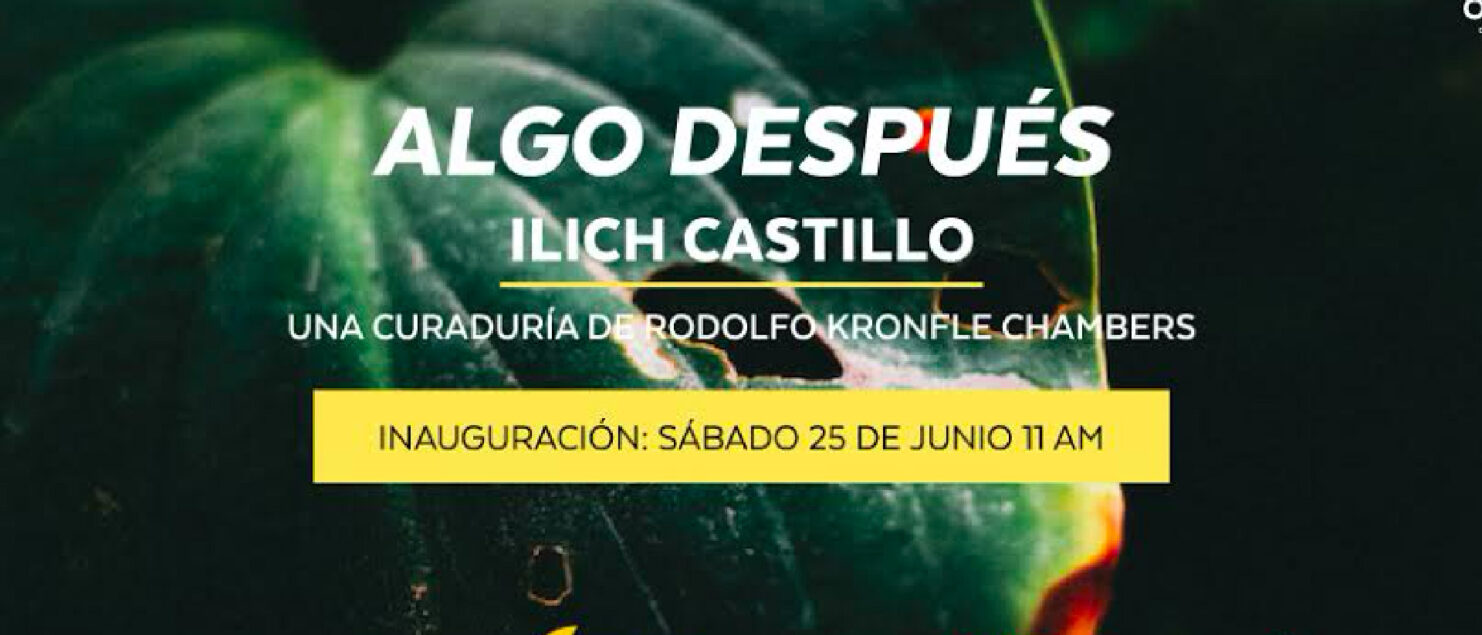Something After: Ilich Castillo
This exhibition focuses on one of the most salient creative veins of the work of Ilich Castillo (Guayaquil, 1978), one of the most complex artists of the contemporary art scene who emerged with vitality in the middle of the last decade in Ecuador. Also a member of the leading Lalimpia Collective, his contributions were key in the aesthetic-political revival of the local scene.
Castillo’s work requires complicit interlocutors open to a dialogue populated by densities, since this is contrasted transversally against identity narratives, scientific content, and connotations derived from specific artistic and cultural repertoires to which it tangentially alludes. Behind his particular way of activating very disparate visual economies together – winks to the canon of abstraction or film history, for example – a certain philosophical breath can be sensed in his work.
The atypical of its creative premises – far from the busiest agendas of art in Ecuador – the erudite references or singular interests that it incorporates in them (many times foreign to the specificity of the artistic field but at the same time always in dialogue with it), added to the experimental sense of his proposals and the development of a self-critical thought that permanently scrutinizes the assumptions of his own practice, they have led him towards restless explorations in different directions. As a counterpart, this ease with which their work filters through different cognitive domains presents challenges for being domesticated by the word: it is certainly a challenge to weave together a discourse that encompasses the bulk of its production in the commonly used codes with which knowledge is distributed in the art world.
Faced with this difficulty, the exhibition presents a selection of works that dialogue with each other, and that allows establishing a specific perspective on a plot of their production. The tour focuses on one of the most repeated approaches in his work, characterized by the series of alterations – primarily through digital procedures – that the artist highlights or provokes on documentary, literary or film collections, several of which have at his disposal. glitch grammar as a trigger. These procedures, where the artist generally inserts an error that causes interference with the code that constructs the image, produce attractive formal outcomes where the resulting distortion, in its occurrence, also hints at the conceptual mistake that we can deduce from the original referent and the error that symbolically it encloses.
Starting from this approach we find photographic series such as Physis and Garden Bugs (Domestic Calamity) that use documentation of geological faults and plagues, respectively. The same is true in videos such as Glitch Ecuador and How far is the triumph of the will, which in addition to delving into the most veiled discursive “forms” that affirm the identity of the Nation-State, also provoke – something common in their repertoire – reflections around the representation/abstraction dichotomy.
Other works, such as Chromatic Traps, Surveying Exercises and Something Later, maintaining that interest in contrasting ideas based on the anomaly present in a given system, are presented more as analogous parallels to the aforementioned works. These privilege the contemplation of an anodyne everyday life and the experience of residual events where some type of revelation is sensed. Thus dreams, small fortuitous accidents, or the ways in which objects are discarded can be subjected to aestheticizing elaborations or installation arrangements that allow, as a whole, to shake established notions about the psyche, nature, landscape, and material culture. His approaches are based on an observation whose biases are nourished from Thoreau’s transcendentalism to the dilemmas that he himself suffered as a contemporary artist who professes a religion filled with restrictive guidelines.
In Castillo, the wandering of the missionary mandate has become something related to drift, from which he decants experiences that subtly underlie this corpus of work. His work does not apologise the pointing out of error as an aesthetic motive or ulterior purpose, but rather as a telltale element within a system of perception of deformities and deviations that challenge the world. In the end, his work seems to propose the awareness of these singularities as a “phenomenological factor” from which he invites us to make sense of everything that surrounds us.
Rodolfo Kronfle Chambers
Curator

